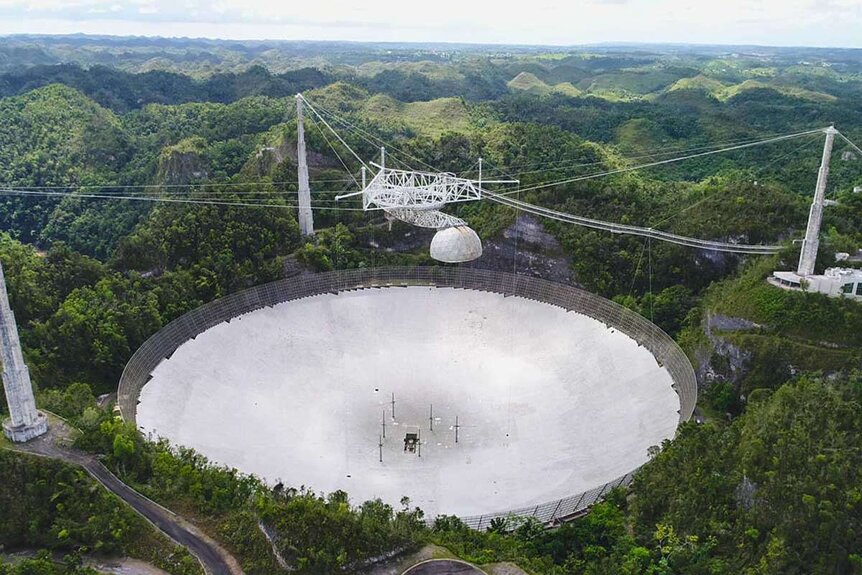Create a free profile to get unlimited access to exclusive videos, sweepstakes, and more!
Watch footage of the devastating collapse of the Arecibo observatory telescope

Remote camera and drone footage of the collapse of the Arecibo observatory radio telescope platform has just been released.
The main 305-meter dish sat on the ground in a remote part of Puerto Rico, with a 900-ton platform with receivers and other equipment suspended 150 meters above it. On Aug. 10, 2020, one of the many cables supporting the platform snapped, and administrators shut down operations to investigate, trying to figure out how to take down the platform in a controlled manner.
Then, on Dec. 1, more cables snapped, causing a catastrophic cascade that sent the platform crashing down, destroying it.
No one was hurt in the collapse, thankfully, but the telescope itself is likely beyond repair.
[Courtesy of the Arecibo Observatory, a U.S. National Science Foundation facility]
The incredibly dramatic new video, from the NSF website, shows the view from a camera on the ground as the platform falls. The cables on one of the three support towers snapped first, so the platform swings down on the remaining two, where it hits a rock cliff just out of the camera’s field of view.
About a minute in, the view switches to a drone, which was very close to one of the towers at the time of collapse. You can see the frayed remains of a previously broken cable. The strain on the cables produces puffs of debris as paint flies off, and then a main cable snaps away from its support. The view pans left as another cable snaps and flails, and the drone catches the platform just after it hits the cliff as debris falls. As the view widens, the top segment of a far tower on the right can be seen hitting the ground and raising a plume of dust.
There have been calls on Twitter to rebuild, which in general is a good idea, though how that can be done is still to be determined.
The telescope was the largest single-dish radio telescope in the world for decades until China built a bigger one in 2016. It was used to make countless observations, including the very first exoplanets ever discovered (orbiting a pulsar). It also could be used as a radar, pinging near-Earth asteroids to get their shape, size, rotation, and also nail down their orbits with precision. No other telescope on Earth has that capability at Arecibo's resolution.
This is a huge loss to the astronomy community, and I do very much hope that a new telescope can be built to replace this monumentally important observatory.



























